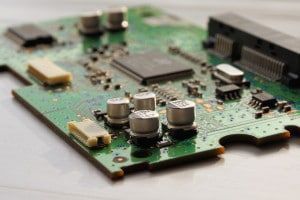Going Greener For Your Electronics Supply Line

With sustainability being one of the most talked-about and hot topics right now it is something all businesses need to look at. A lot of people think that electronic waste is cheap and is associated with foreign labor and bad practices and laws. This then often tends to be seen as very pollution heavy and is well known to be bad for the planet and not something a company wants to be known for. Although looking to incorporate greener practices within the electronics industry may seem difficult to do, the longer-term benefits outweigh the changes. They are substantial as not only will be reducing the carbon footprint of the company but will also help cut costs for the company by lowering energy consumption and improved process control. So it is better for your budget!
Advantages like these coupled with improved energy efficiency can boost customer satisfaction and give the company a better brand image. How your business is seen by the public is an important part of your brand and how successful you can be. Showing that you are going greener and looking for more sustainable practices is not only better for the planet from an electronics point of view but what a lot of the public are looking for these days.
Most companies are looking to be more sustainable and incorporate greener practices, one important way to do that would be to keep an eye on sustainable business trends and see what can be incorporated, especially in the areas that are normally looked at for waste and pollution like electronics. It is important businesses are showing a good focus on developing and implementing more sustainable manufacturing methods and techniques while not compromising on development opportunities or the business needs. Companies are already taking huge strides towards a more sustainable future by adapting designs to streamline processes as well as looking to increase the reusability and recycling rate of their products.
If you opt to use a more local company like a PCB supplier which uses the highest quality of components and materials which should be one of your main focuses as the reputation of your business can be dependent on the quality of what you offer. It is also beneficial to use someone local and close to home as you won’t have added overseas costs, difficulty getting help with time zone issues and they can offer turnkey production.
Common reasons for short-lived electronics that can have a bad impact on the planet are fragile materials so they will need replacing more often, a failing part which is irreplaceable batteries, and high repair costs.
By looking to implement them now and show that you are moving towards a greener path it can give you a headstart if laws and guidelines come into place as you will already have these practices going ahead so deadlines and quick changes won’t be an issue for you. As more and more people are demanding greener practices and also looking for them to be implemented into laws and policies it is increasingly beneficial to get ahead of it.


